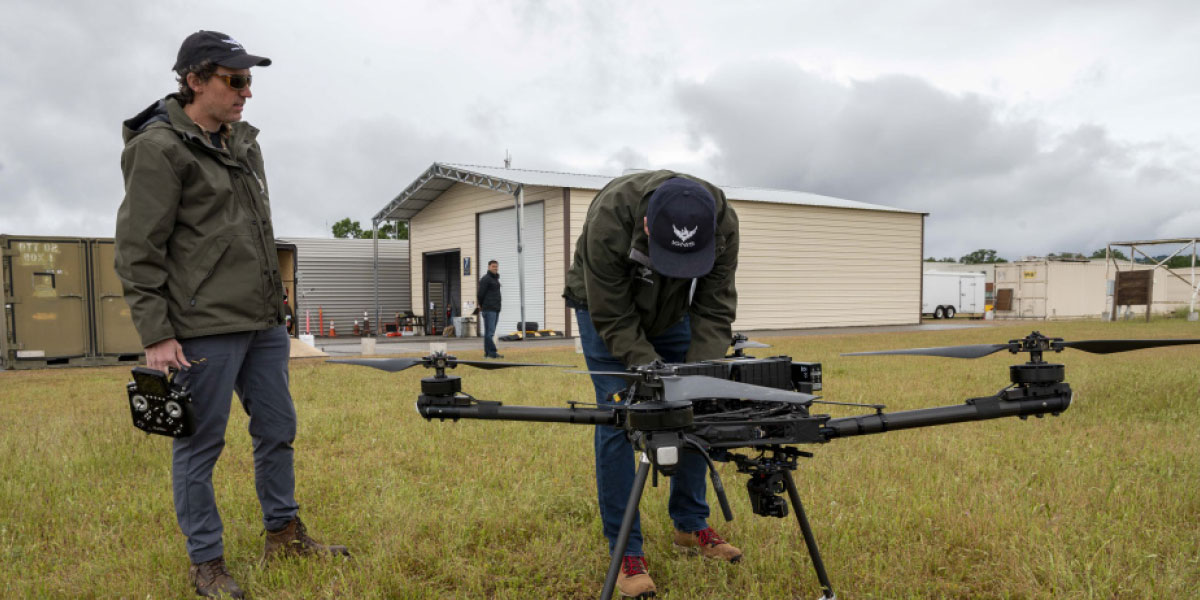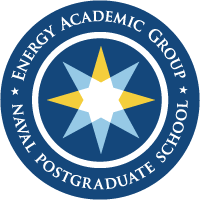JIFX Operational Energy Enterprises - Energy Academic Group

Preparing for the Unexpected: Supporting the ERRE TTX at Naval Station Rota
By Brandon Naylor, Faculty Associate-Research, Energy Academic Group;
and EAG Interns Jorge Rodrigues and Tim Duran
This past May and August, technology demonstrators and experimenters gathered for the Joint Interagency Field Experimentation (JIFX) and Thunderstorm events hosted by NPS at Camp Roberts. JIFX and Thunderstorm allow technology developers to bring their systems to a permissive representational operating environment where they can conduct experiments that would otherwise require special permits or permissions, and to get feedback from key military stakeholders. Examples of experiments conducted at JIFX included autonomous resupply missions using large-scale UAVs and ground vehicles, remote networking applications, and tactical energy generation and storage among others.
Academic and private industry technology developers were invited to JIFX and Thunderstorm because their technologies show promise in addressing near-term key capability gaps. Among the invited experiments, several showcased key operational energy aspects that hold significant promise.
Other examples included a demonstration of Airrow's "Sustained Autonomous Overwatch" where Dronehub was presented, a computer vision-driven robotic drone station capable of swift battery swaps and payload exchanges, enabling autonomous operations for tasks like supply drops, munition reloads and overwatch security. Bluespace, AI's "Motion First Perception" technology stood out by harnessing 4D emerging technologies, eliminating the need for training data or maps, using perception systems in real-time. Bluespace can provide great benefits for operations in austere environments, especially where there may be IED threats. Stucan Solutions Corporation's "QuickBlock" demonstrated a reusable structure solution, being an alternative to sandbag protection, utilizing renewable materials such as polyethylene to procure blocks which can be built into walls to protect any equipment or troops in hostile environments. These blocks, each with a 3.6 ton payload, can prevent armor-piercing rounds from penetration, as well as withstand mortar blasts.
JIFX and Thunderstorm not only highlighted these operational energy innovations but also offered a vital opportunity to observe and evaluate the operational energy dynamics of promising technologies. This platform fosters ongoing experimentation, creating a comprehensive understanding of operational energy performance measures across various showcased technologies. The Energy Academic Group (EAG) plays a pivotal role as a cross-cutting organization, seamlessly integrating faculty, students, and interns into the realm of longitudinal operational energy field experimentation. By engaging these diverse perspectives, EAG enriches the understanding of operational energy measures of performance for the technologies being demonstrated.
LEARN MORE
The full report is available at: https://nps.edu/web/eag/intern-research
NPS Contact: Brandon Naylor at blnaylor@nps.edu
Quarterly Newsletter
Surge is published quarterly by the Energy Academic Group and covers a divese range of energy-related topics. View archive

